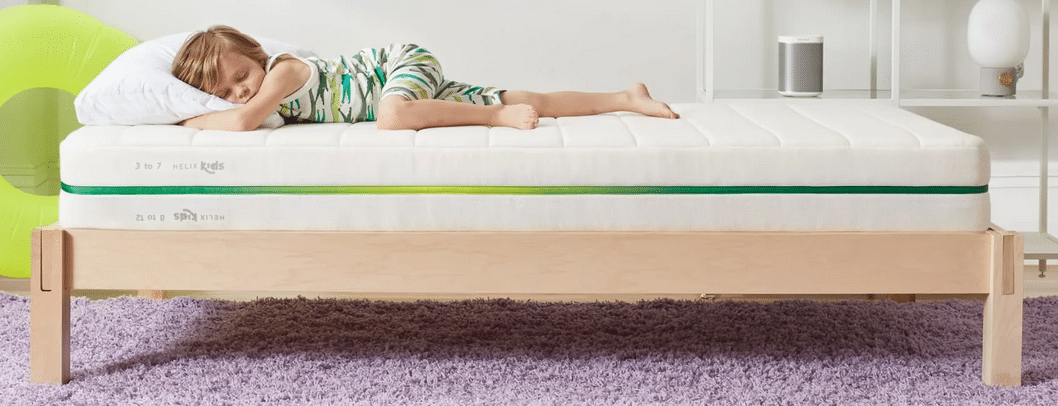Best Mattress Under $1000 in 2024
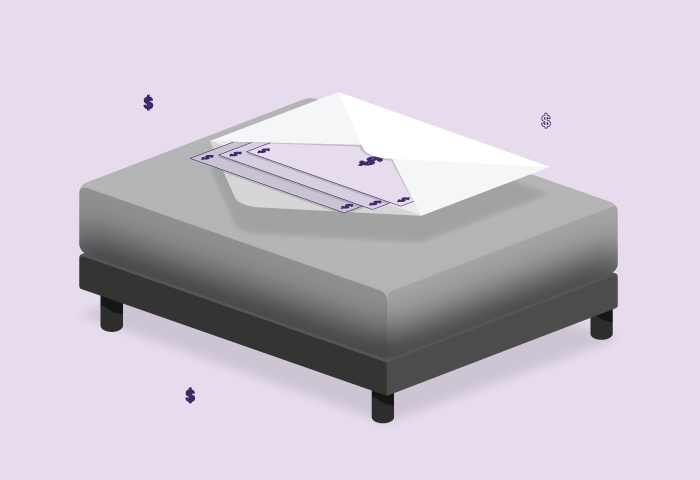
Trust Zoma for expert insights on sleep wellness. Our dedicated team, including sleep science coaches, engineers, and product evaluators, meticulously investigates mattresses using our athlete-informed product methodology. We provide precise and trustworthy articles, continually updating content with the latest scientific breakthroughs. Count on us for top-rated, personally reviewed mattresses that prioritize comfort and performance, elevating your rest to its highest potential.
Overall Best Mattress for $1000 – Zoma Start Mattress Best Mattress for Different Sleeping Positions – Vaya Mattress Best Luxury Mattress under $1000 – Titan Plus Mattress Best Medium Firm Mattress under $1000 – Nolah Original 10 Best Mattress under $1000 for couples – Bear Original Mattress Best Cooling Mattress under $1000 – Tuft and Needle Original Mattress Best Mattress with Motion Isolation under $1000 – Brooklyn Bedding Essential Mattress Best Mattress for Kids – Helix Kids Mattress
Buying Guide for Best Mattresses under $1000
It’s tough to shop on a budget and know you’re still receiving a quality product, which is why we put together this guide to help you find the best mattress under $1000. When you’re looking for a mattress, though, you’ll want to look at more than a bed’s price.
Consider its materials, whether it’s made of memory foam, latex, or coil innerspring. If you’re buying a foam bed you’ll want to look at the density of its layers to determine the support it will provide.
And keep your sleeping position in the forefront of your mind as you shop, to better determine which bed can give you the full night’s rest you need.
We’ll go into further detail of the factors and features you should consider when selecting a new mattress, and how they work together in a quality bed.
Best Mattresses under $1000
Here’s a list of best mattresses under $1000:
Best Overall Mattress under $1000
Zoma Start Mattress

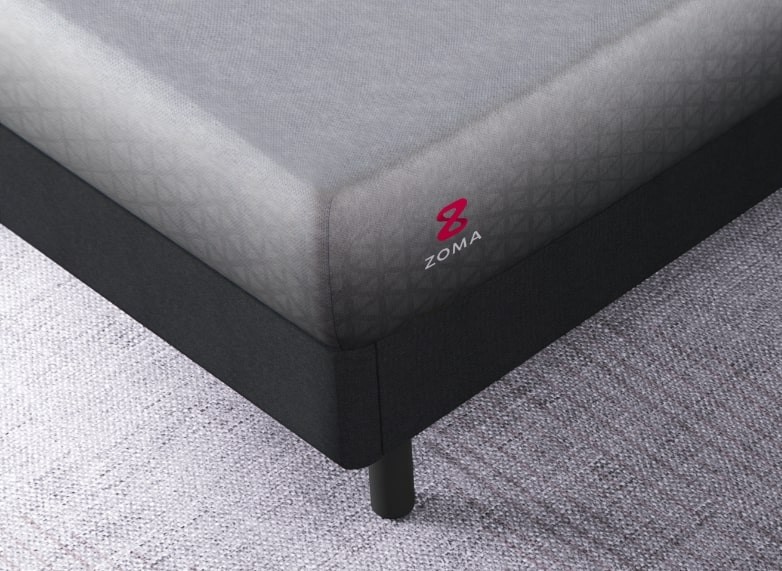
- Price Range: $599 - $1048
- Made In USA: Yes
- Motion Isolation: No
- Available Sizes: Twin, Twin XL, Full, Queen, King, Cal. King
- Athletes and physically active individuals seeking optimal sleep recovery.
- Those in pursuit of a rejuvenating night's sleep, free from aches and discomforts.
- Soft and contouring foam actively dissipates excess warmth.
- Adds a delightful bounce, allowing for effortless movement
- Promotes healthy spinal alignment for refreshed mornings, day after day.
The first mattress on our list of best mattresses under $1000 is the Zoma Start.
Zoma Start is not only economical but also suits athletes, which testifies to the firmness and the fantastic mattress quality that we expect from Zoma mattresses.
The innovative features include an airy cover, and a cooling gel memory foam to support your body to provide you with unparalleled comfort and support all night long. Our reviewers claim the result of sleeping on a Zoma Start mattress will be a fresh morning after all your aches and discomforts vanish.
We selected the Zoma Start mattress because it is the best option for under $1000. You can stay relaxed from head to toe with the AirCloth performance fabric.
Our sleep reviewers liked this feature more than any other because the light, airy feeling is comforting. This mattress cover is designed to promote airflow and breathability.
This cover ensures that you enjoy a refreshing and comfortable sleep environment, free from overheating or discomfort.
The organic, and hypo-allergenic material of the mattress makes it an excellent purchase.
If you do not have the requirement to buy a large mattress, we suggest that you get this one because of its thick layers of quality gel foam, and ultra-stretchy knitted cover.
The Cooling Comfort technology gives sleepers a relaxed sleep while the gel memory foam layer is engineered to ease pain-causing pressure points and promote proper spine alignment, allowing you to wake up feeling refreshed and revitalized each morning.
You will feel healthy because of the well-contoured support of the mattress.
Moreover, the Reactiv™ Layer adapts to your movements, providing instant relief and ensuring a restful sleep experience night after night.
Best Mattress for Different Sleeping Positions under $1000
2. Vaya Mattress
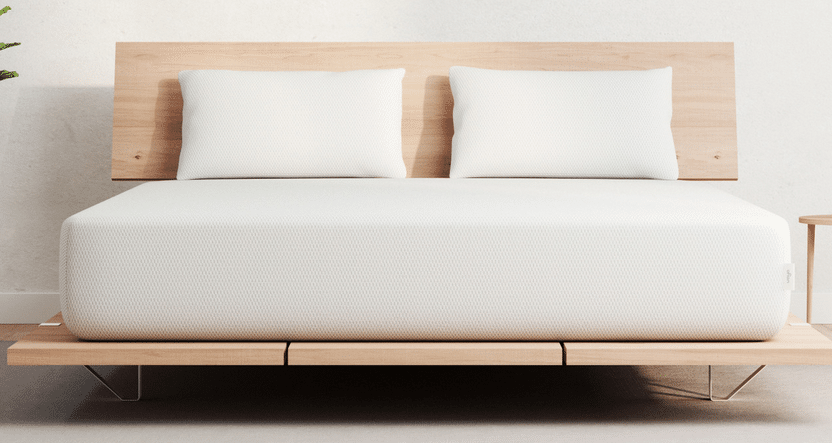
- Price Range: $749 - $1199
- Made in USA: Yes
- Motion Isolation: Yes
- Available Sizes: Twin, Twin XL, Full, Queen, King, Cal. King
- Those ready to elevate their sleep experience to new heights.
- Individuals seeking ultimate comfort, cooling properties, and durable support for revitalizing sleep.
- Sleepers of all positions, as the Vaya mattress is designed to cater to various sleeping preferences with its innovative Comfort Foam.
- Molds to your body for pure comfort and restful sleep.
- Offers motion isolation and balanced firmness for undisturbed sleep.
- Ensures cool sleep even in warmer climates.
According to our reviewers, the Vaya mattress is the best pick if you are ready to elevate your sleep experience to new heights.
This mattress is designed to provide you with ultimate comfort, cooling properties, and durable support for a revitalizing night’s sleep. Vaya mattress is constructed with care to provide pure comfort that molds to your body with the innovative Vaya Comfort Foam.
Our experts also experienced how Vaya Mattress contours against your body, giving you restful sleep. The Comfort Foam keeps your spine aligned and bounces back quickly.
Our sleep reviewers selected this mattress because of the Comfort Foam, which is ideal for all sleeping positions. You can change sleeping positions throughout the night, and your partner will not feel a thing due to motion isolation and firmness.
Moreover, Vaya does not overheat even in warmer cities because of the airy cover that regulates the temperature.
The breathable cover enhances airflow, preventing any possibility of overheating and ensuring a refreshing sleep environment every night.
The Vaya Mattress has two layers of memory foam and high-quality foam that will provide comfort for all sleepers.
You will like the soft cover, and the final look, which makes this mattress a great purchase for those who like hassle-free, high-performance mattresses.
Whether you prefer to sleep on your back, side, or stomach, the Vaya Mattress delivers unparalleled support tailored to your body’s needs.
Vaya mattress provides the perfect balance of firmness and support, and as you lay down, the bed will support your joints and relieve pressure from your shoulders, spine, and knees.
This support promotes proper spine alignment and ensures a restful night’s sleep.
Best Luxury Mattress under $1000
3. Titan Plus Mattress
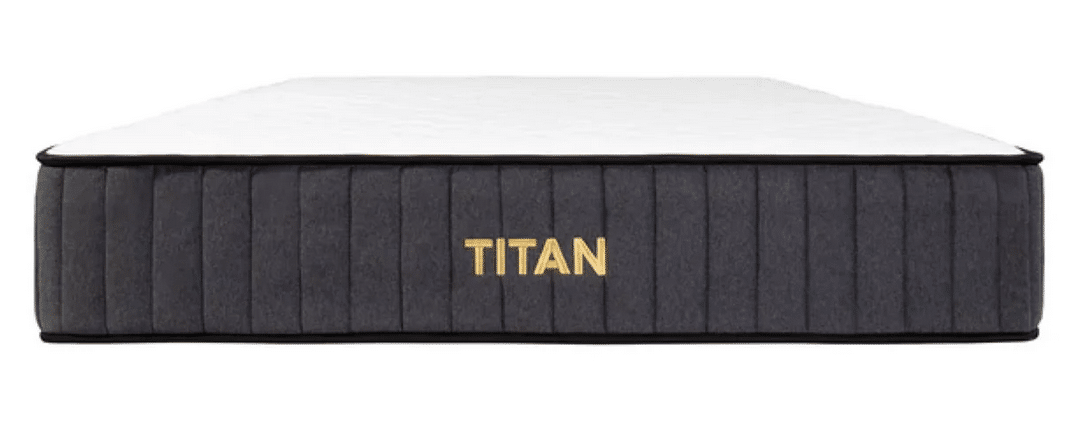
- Price Range: $699 - $1499
- Made in USA: Yes
- Motion Isolaton: Yes
- Available Sizes: Twin, Twin XL, Full, Queen, King, Cal. King, Split Cal King
- Individuals seeking a luxurious sleep experience without breaking the bank.
- Those in search of a budget-friendly mattress with premium features.
- Sleepers who prioritize cooling properties and strong support in their mattress choice.
- Delivers natural softness for a luxurious feel.
- Infusion of cooling gel in the cover ensures optimal thermal regulation.
- The mattress core is robust, contributing to overall support and durability.
We tested multiple mattresses when formulating the list of the best mattresses under $1000, Titan Plus Mattress is one of the strongest contenders that has made it to the list.
Titan Plus comes with a breathable Quilted Cover designed to deliver natural softness. The light feeling of this cover is so luxurious that you would forget that you bought the mattress on a budget.
We have discussed these features below, but one thing that deserves to be said again is that Titan Plus is as luxurious as any other mattress that costs much more than this model.
We selected Titan Plus among the best mattresses under $1000 because it is a reasonable choice with the GlacioTex cooling properties, comparable to the luxe version of Titan Plus.
This cover offers an infusion of cooling gel for optimal thermal regulation, ensuring a refreshing sleep experience even on warm nights.
Moreover, our team found the core of this mattress to be strong and a source of additional support factor.
Titan Plus mattress has a thickness of 11.25 inches with a fantastic composition of five layers that take care of comfort and support like any high-end mattress.
The core of the mattress is an eight-inch TitanCore, with individually encased coils that ensure targeted support and minimal motion transfer for an undisturbed night’s sleep.
The quilted top of Titan Plus is a famous feature of the brand as it provides unparalleled comfort. The Gel foam and Titanflex comfort foam were something our sleep reviewers loved.
The layers provide excellent support to the spine, distributing the pressure off some points to give you a soothing feeling.
The combination of layers delivers immediate responsiveness to your every movement, ensuring a supportive and indulgent sleep surface.
Best Medium Firm Mattress under $1000
4. Nolah Original 10
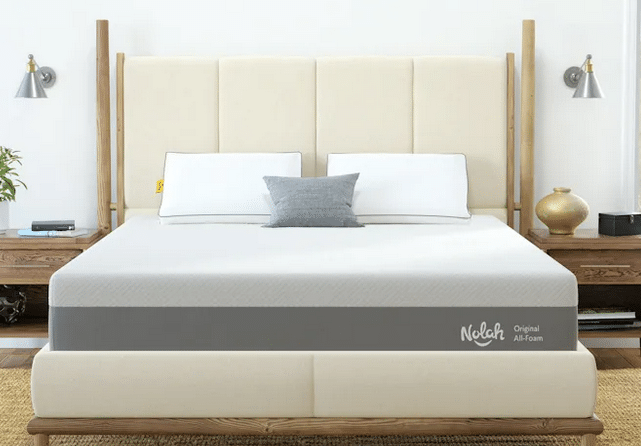
- Price Range: $999 - $2398
- Made in USA: Yes
- Motion Isolation: Yes
- Available Sizes: Twin, Twin XL, Full, Short Queen, King, Short King, Cal. King, Split Cal King
- Individuals seeking affordability and versatility in a mattress without compromising on comfort.
- Sleepers looking for gentle contouring and pressure relief for a wide range of sleep preferences.
- Side sleepers who benefit from the flexibility and firmness provided by the innovative zoned AirFoam layer.
- Breathable layers of resilient foam, including the innovative zoned AirFoam, ensure flexibility and firmness.
- The cool gel layer in the mattress cover supports a comfortable sleep temperature throughout the night.
- The mattress core is robust, ensuring durability and longevity.
The Nolah Original 10″ Mattress is an excellent choice for comfort and longevity, according to our sleep experts.
This mattress is the best for those seeking affordability and versatility as it boasts gentle contouring.
This feature relieves pressure points, and a medium-firm feel that caters to a wide range of sleep preferences.
We chose this mattress because of the satisfaction of our reviewers. The breathable layers of resilient foam include the innovative zoned AirFoam.
This mattress ensures flexibility and firmness, particularly beneficial for side sleepers.
The AirFoam layer is perforated and provides added softness and adaptability precisely where it’s needed most.
With the Nolah Original 10″ Mattress, our reviewers claimed that users indulge in a relaxing sleep with the cool gel layer and the firm mattress, which will provide relief to your shoulders and spine, giving you a restful sleep.
The core is strong and the layers of AirFoam and Tencel make this mattress a perfect pick for people who want to prioritize good sleep.
The perfect balance of comfort and support, all wrapped in a package that prioritizes quality, affordability, and innovation.
The Nolah Original 10 enhances the overall sleep experience with comfort through innovation. The features of this mattress make it a surprise at its nominal price. You get cooling cover support and an excellent strong core which keeps the mattress in shape for years.
Best Mattress under $1000 for couples
5. Bear Original Mattress
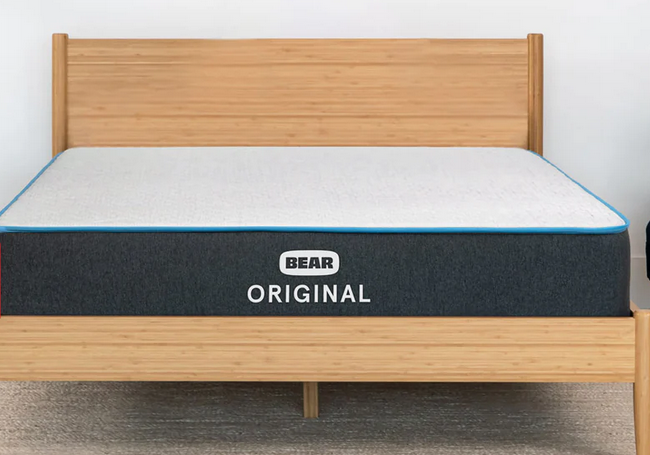
- Price Range : $786 - $1099
- Made in USA: Yes
- Motion Isolation: Yes
- Available Sizes: Twin, Twin XL, Full, Queen, King, Cal King, Split King
- Couples seeking undisturbed sleep.
- Co-sleepers with varying sleep preferences.
- Budget-conscious individuals prioritizing quality rest.
- Exceptional motion isolation for disturbance-free nights.
- Versatility across different sleep positions.
According to our sleep experts, the all-foam mattress has a firmness of 7/10, which makes it a bit long-lasting for heavy sleepers. The quality of the mattress is good, and you will not need to purchase another mattress soon.
The 10-inch thickness will allow you to wake up fresh without getting disturbed by a co-sleeper’s movement. This mattress has good temperature control, which makes it as good as any luxury mattress.
All these features that, too, under $1000 are a real luxury.
The Bear Original Mattress is among our top choices because it is a top contender for couples seeking undisturbed sleep.
The excellent motion isolation ensures that you will not be disturbed and will wake up to a fresh morning. Also, our team found that this mattress provides consistent support across various sleep positions, making it suitable for co-sleepers with different preferences.
Setting itself apart with innovative technology, Bear incorporates Celliant-infused quilt covers, similar to those found in premium sports apparel, to promote cell recovery and enhance the therapeutic potential of sleep.
While in our analysis, the mattress excels in most aspects, its slight tendency to sleep warm may concern heat-sensitive individuals. However, this characteristic can be advantageous in cooler climates, offering a cozy reprieve from chilly nights.
Bear Original Mattress has a soft, comfortable cover.
It can be used without any covers because of the fine cotton finish, which makes it breathable and comfortable.
The complimentary pillows will make your sleep time more peaceful. Our team has regarded the Bear Original mattress as a good choice for couples who prioritize quality sleep without breaking the bank.
Best Cooling Mattress under $1000
6. Essential T&N Original
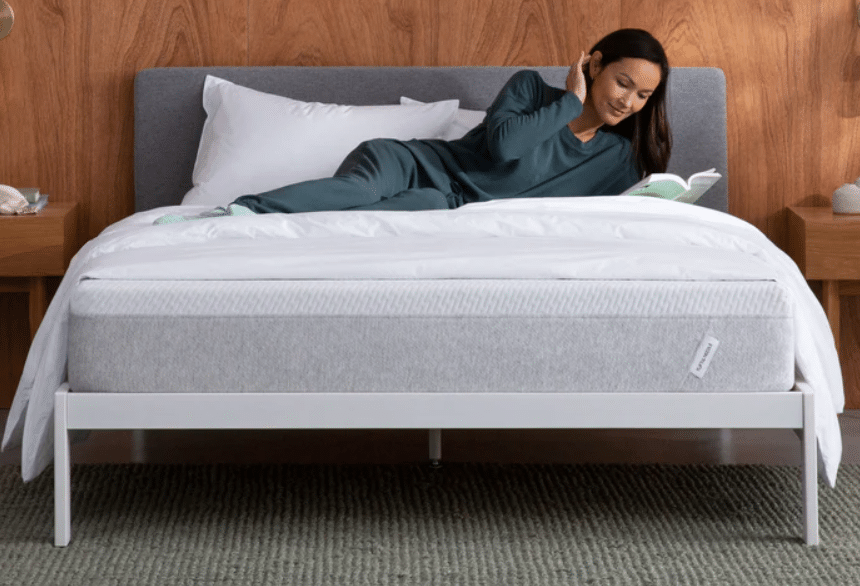
- Price Range: $645 - $1295
- Made in USA: Yes
- Motion Isolation: Yes
- Available Sizes: Twin, Twin XL, Full, Queen, King, Cal King
- Back and stomach sleepers seeking optimal support and alignment.
- Budget-conscious individuals prioritizing quality sleep.
- Co-sleepers with varying sleep preferences.
- Thoughtful blend of cooling gel and heat-conducting graphite.
- Versatility across different sleep positions.
- Exceptional motion control for undisturbed rest.
Our sleep reviewers found Essential T&N Original is an excellent composition of cooling gel and heat-conducting graphite.
Tailored for back and stomach sleepers, the Essential T&N Mattress provides optimal support and alignment, ensuring a comfortable sleep experience night after night.
We selected the T&N Original because it has the perfect blend of features that provides comfort for all kinds of sleepers.
This mattress is economical and offers cool gel technology and graphite composition like many high-end mattresses.
Our reviewers found this mattress to be just the right firmness and that is why every kind of sleeper can find comfort and support.
You can enjoy the three layers of adaptive foam, base layer, and plush cover. The three inches of innovative open-cell foam provides support while the graphite and cooling gel make this mattress a moderate temperature suitable for sleeping.
Beneath the surface is the 6.5-inch foundational support foam. Designed to prevent sinking and provide robust support, this layer ensures lasting durability and stability throughout the night.
T&N Original is not too hard, and neither is it too soft, which makes it ideal for people who sleep in different poses.
Moreover, the motion control ensures that if you are sharing the bed with a partner, neither of you gets disturbed by the other.
Best Mattress with Motion Isolation under $1000
7. Brooklyn Bedding Essential Mattress
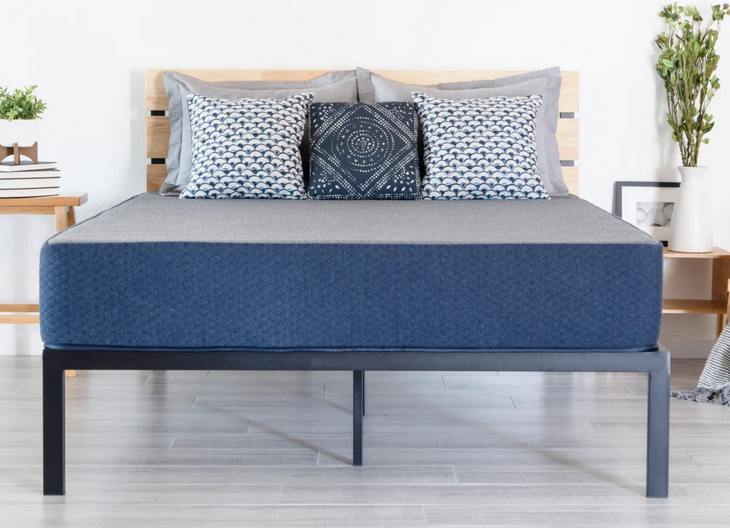
- Price Range: $532 - $1132
- Made in USA: Yes
- Motion Isolation : Yes
- Available Sizes: Twin, Twin XL, Full, Queen, King, Cal King
- Tailored for everybody, including heavy sleepers, individuals with neck and shoulder pain, and those seeking improved sleep quality.
- Offers essential features like pressure relief, motion isolation, and superior support.
- Provides lasting durability, making it a smart investment.
- Not too soft, not too hard—ideal for various sleep preferences.
- Excellent motion isolation ensures undisturbed rest for co-sleepers.
- Provides great support for different sleep positions.
From Brooklyn Bedding, we found the best mattress under $1000, with all the same features that people pay for, and the only luxury missing would be to know that it is expensive.
This hybrid design ensures a perfect fit, whether you’re a student or an athlete with different needs for sleeping comfort. Brooklyn Essential alleviates the strains of daily life, and that makes it a good fit for our list of best mattresses.
We selected the mattress because it is tailored for everybody. Heavy sleepers, people with neck and shoulder pain, and even people who want to improve their sleep quality.
This mattress offers essential features for restorative sleep: pressure relief, motion isolation, and superior support, all wrapped in one.
Moreover, it will provide you with the durability that makes it a great purchase.
The Brooklyn Bedding Essential Hybrid Mattress is a versatile and budget-friendly choice, with a high-density foam cover, and a transition foam.
The third layer consists of individual coils that provide a mix of bounciness, and firmness.
Our testing revealed that the thickness of the mattress complements the impressive motion isolation.
Brooklyn Essential mattress feels comfortable and relaxing due to its soft cover and varying firmness to suit different body types.
No matter what pose you sleep in, the mattress will support the body and relieve pressure from the hips, shoulders, and back area.
Best Mattress for Kids under $1000
8. Helix Kids Mattress
- Specifically designed to accommodate the transition from needing firm support to desiring cushiony comfort as a child grows.
- Ideal for children with changing sleep preferences.
- Ensures healthy spinal alignment and restful sleep.
- Seamlessly blends innerspring and foam technologies.
- Robust 5-inch layer of high-quality innersprings combined with carefully crafted foam layers.
- Not too hard, not too soft—offers the right support for growing children.
Helix Kids Mattress is an innovative hybrid mattress that seamlessly blends the best of innerspring and foam technologies, offering the perfect balance of support and comfort for growing bodies.
With a total height of 8 inches, the Hybrid Growth Mattress features a robust 5-inch layer of high-quality innerspring combined with carefully crafted foam layers. Our team found that this unique construction ensures optimal support and pressure relief, promoting healthy spinal alignment and restful sleep.
Our reviewers like Helix Kids because of its flippability feature. This mattress is specifically designed to accommodate the transition from needing firm support to desiring cushiony comfort as a child grows, making it an ideal choice for evolving needs.
The TENCEL cover of the Helix mattress is natural, and hypoallergenic to suit children of all ages. This mattress is infused with AEGIS Microbe Shield, which can effectively combat odor-causing bacteria, ensuring a fresh and hygienic sleep environment for children.
The Helix Kids mattress is what we call the Goldilocks’ choice because it is not too hard, not too soft, and offers the right support.
For children, comfort is of utmost importance because they need more hours of quality sleep. If they wake up with sweaty feet and backs or if they feel the bed is too hard, it will create a problem.
- Shipping may take longer
- Some children like softer mattresses
What to Look for in a Mattress Under $1000
First, it’s important to know that all mattresses are made of layers. There is always at least two, a top comfort layer and a bottom support layer, though a well-designed mattress will have a third in-between layer to act as a transition. A mattress with three layers will cost more but will provide you with better support and comfort.
Second, we recommend a mattress no less than 10 inches tall. Anything less, and you risk not having adequate support and durability. You might have to settle for a thinner mattress if you’re shopping on a truly tight budget under $500, but 10 inches is the minimum you should shoot for.
Third, a CertiPUR-US® certification is something to look for if you’re concerned about the materials going into your mattress. CertiPUR-US® is a certification program for foams by an independent, not-for-profit organization. Certified foams are made without the following:
- Ozone depleters
- Mercury, lead, and other heavy metals
- Formaldehyde
- PBDEs, TDCPP, or TCEP flame retardants
- Phthalates regulated by the Consumer Product Safety Commission
Certified foams also have low Volatile Organic Compounds (VOCs) emissions for better indoor air quality.
Finding the Mattress That’s Right for You
How do you pinpoint the best mattress for your money? You need to consider not just price and features, but your sleeping style and what mattress type fits best with that. And of course, you need to know how to judge a mattress’s materials and see what trials and warranties come attached.
Sleep Positions
Your sleep position affects the type of mattress you should look for, as the mattress firmness best for you depends on your typical sleep position. If you’re unsure how you sleep, then just take note of the position you fall asleep in and the position you wake up in. The position you wake up in is likely to be your dominant sleeping position.
Side Sleepers
Side sleeping is the most popular sleep style, and can be further broken down into four positions, from most common to least:
- Fetal, named for how it harks back to a fetus’s position. Those who sleep in this position bend their legs at the knees and keep their back curled down to their legs.
- Log, where the sleeper’s arms and legs extend from the body, while the spine remains straight.
- Yearner, named for how its sleepers reach their arms out as if trying to grab for something beyond them.
- Sprinter, named for how the sleepers keep their arms, back, and one leg straight, while the other leg is bent at the knee.
If you’re a side sleeper, look for a medium to soft mattress, as they tend to provide the right mix of support to promote a healthy spine while giving the shoulders and hips enough softness to relieve pressure.
Side sleepers may need to budget for a slightly more expensive mattress than back or stomach sleepers, as the softer mattresses most suited for them tend to be thicker than a firmer mattress, which means more materials used in its production and an added cost.
Read More: Best Mattress for Side Sleepers Guide
Back Sleepers
Back sleeping is the style naturally best for a healthy spine. Your weight is more evenly distributed than if you’re sleeping on your side, and gravity doesn’t pull the spine out of alignment as it does when sleeping on your stomach.
Back sleepers need a mattress in the medium-firm to firm range to keep their spines aligned, along with their hips and pelvis. Too soft a mattress will have your torso sinking into the mattress, leading to pain and poor sleep. And a too firm mattress won’t provide support for the curve of your lower back.
While back sleeping is healthy, back sleepers are more prone to sleep apnea and snoring.
Stomach Sleepers
Sleeping on your stomach is not recommended, as it can lead to issues with your spine and back. Other less serious complications can include restless sleeping, premature wrinkles and acne breakouts. If possible, we recommend you try sleeping on your side or back.
If that’s not feasible, a firm mattress can help to alleviate the effects of sleeping on your stomach. Sleeping on your stomach shifts your center of gravity to your midsection, and your torso may sink into the mattress and overextend your spine if the mattress isn’t of proper firmness.
Combo Sleepers
Shifting positions frequently throughout the night is the sign of a combo sleeper. Combo sleepers should look for a mattress to act as a middle ground between the sleeping styles listed above. If you move between sleeping on your side and back, you’ll need a mattress to provide the cushion and give your sides needs, but also the firmness your back needs.
Or you could try to determine what your dominant position is, and shop for a mattress that suits that position best. Take note of what position you fall asleep in and what position you wake up in. The position you tend to wake up in is likely your dominant sleep position.
You can even try training yourself to sleep in one position through the use of supportive pillows. Just decide whether you want to make the move to back or side sleeping, then surround yourself with a couple of pillows to keep you in place before you drift off to sleep.
Those who are happy as combo sleepers should look at medium to medium firm beds. Combo sleepers also need a resilient bed, one capable of bouncing back to its original shape, to allow for easy mobility. A bed too plush will swallow you up as you shift in your sleep.
Mattress Types
There are four main types of mattresses you’ll come across as you shop around: memory foam, latex, innerspring, and hybrid. An air mattress or a futon are inexpensive options in the short run, but those four types should last you years and can provide you with the right balance of support and comfort for a good night’s sleep.
Memory foam
Memory foam has grown in popularity with the rise of bed-in-a-box brands. Memory foam mattresses can be easily compressed and rolled up, allowing companies to ship them out from a warehouse. This new business model allows for free delivery, generous customer trials, industry-leading warranties, and being able to buy a luxury mattress at more affordable pricing.
Memory foam is polyurethane foam with added viscosity and elasticity. It can provide great pressure relief for chronic pain sufferers, as the contouring foam molds to the body and soothes the pain from pressure points in sensitive areas such as the neck, back, hips, and spine. Support foam beneath gives the bed its shape and structure.
Memory foam mattresses also provide motion isolation, so they’re a great choice for anyone sharing a bed or sleepers who move around a lot in their sleep. The memory foam will keep your movements from disturbing yourself or your partner while you sleep.
Traditional memory foam form can hold too much body heat, creating a heat trap. One solution manufacturers may use is infusing the foam with various gels to prevent hot sleepers. Gel memory foam can reduce the retention of body heat, allowing for a cooler night’s sleep. Materials other than a cooling gel might be added, such as copper or graphite, which both have cooling properties. Some brands will use more than one of these in their mattresses.
When considering a memory foam bed, look for its density. The density of the foam doesn’t correlate to its firmness, but rather the support it will provide you. A higher density should offer more support, a lower density less.
If you’re buying your first memory foam mattress, you’ll also want to think about your existing bed’s foundation. Memory foam mattresses need a solid and flat surface for uniform support. So if your previous bed was an innerspring mattress on top of a box spring, then you’ll need a new foundation as a box spring does not provide adequate support for a memory foam mattress.
A good foundation has a price range of $200 to $300, though alternatives such as bunkie boards, which you place on top of a box spring, can cost as little as $50 to $60. Factor in that cost as you shop around for a good memory foam mattress. If your budget is tight, though, you can always keep your mattress on the floor either temporarily or permanently.
Latex
Latex foam is generally more breathable than traditional memory foam, which allows for the mattress to cool naturally. The material also gives more of a responsive bounce, whereas memory foam tends to cradle you. You’re held more on top of the bed with latex.
The material’s structure also gives a latex mattress inherent strength and durability. You’ll find extensive use shouldn’t leave it with deep impressions from your body, as it might in other mattresses. But that structure also has a downside, as some customers have found latex mattresses had a firmer feel than they were expecting. Many latex mattresses counteract this with a soft and plush pillow top.
Latex beds can be made from Dunlop latex, Talalay latex, or synthetic latex. We recommend you stay away from the synthetic blends if you can. It’s hard to predict how long a synthetic blend will last, while natural latex has an average lifespan of about 15 years. We also advise anyone with a latex allergy to look at a different kind of bed.
Innerspring
The original mattress dwindles in popularity as time goes on and other mattress types are introduced and perfected, but you’ll still find quality innerspring mattresses on the market. They’re bouncy and responsive, keeping you lifted for good spinal alignment. Though, they can’t match the cushiness of memory foam or latex.
Innerspring mattresses can be made from a selection of different materials, but typically you’ll find they have thin, non-tempered steel. If the mattress has pocketed coils, it means the steel coils are wrapped in fabric or foam pockets for independent movement of each other, which prevents motion transfer and improves zoned support. Pocketed coils are also believed to last longer than other coil systems.
Hybrid
Hybrid mattresses are essentially a mix of memory foam and innerspring, pairing a pocketed coil system with foam layers. Sometimes it’s memory foam layers, sometimes it’s latex, and occasionally it’s a combination of both. Often they’re the most expensive kind of mattress available, because of their mix of high-quality materials.
Note what the top layer is made of, be it memory foam, poly-foam, or latex, and remember the tips we’ve offered on judging those. Then judge it further based on its coil count and the coil system setup.
Read More: Best Hybrid Mattress Guide
Mattress Firmness
Mattress firmness is one of the more opinionated ways to judge a mattress’s quality. What one person thinks is too firm another will find just right. As we’ve already discussed, the perfect firmness level for you will depend on your sleeping style.
Side sleepers need a softer mattress, as a firmer mattress will be unable to conform to their body and provide pressure relief to their shoulders and hips. Back and stomach sleepers will need a firmer bed to keep their spines healthy.
You’ll also want to consider your body weight as you shop for your perfect mattress. The best mattresses for heavy sleepers are firm to offer needed support. Petite, lightweight sleepers should conversely look for a softer mattress. The table below breaks it down:
| Weight | Mattress Firmness |
|---|---|
| Less than 130 pounds | Medium soft to soft |
| 130 to 230 pounds | Medium to medium-firm |
| 230 pounds and more | Medium-firm to firm |
Mattress brands also measure firmness options with a scale from one to 10, rather than just descriptions of firmness. One is the most soft while 10 is the most firm, but most of the mattresses on the market range from three to eight. This scale is still subjective, though, as what one company calls a four, another might call a five.
The most objective way to know a mattress’s firmness is with its Indentation Load Deflection (ILD) rating. This is a measurement of how much weight the mattress can take before it indents up to one inch or 25 percent of the mattress’s thickness. A firmer mattress gets a higher ILD rating, a softer mattress a lower one. This rating is not always openly displayed, and you may have to ask the company for it.
Since mattress firmness can be subjective, it’s not a bad idea to skim customers’ reviews for comments about firmness before you buy. Did anyone get a firmer or softer mattress than they were expecting? Did it cause an uncomfortable night of sleep or back pain for anyone?
Sleep trials are another tool for getting your desired firmness in a mattress, as the company will work with you to ensure you are comfortable with your new bed.
Sleep Trials and Warranties
After mattress materials and firmness, the next thing you need to consider is the sleep trial period and the length and coverage of the warranty tied to the mattress.
The sleep trial is the number of nights a company will let you test out your product. Many mattress stores and online companies offer 90 to 120 days, and some even go so far as to let you try it out for a year. Keep in mind, it takes about 30 days to fully adjust to a new mattress, so don’t be too quick to take the first few nights as a sign of whether or not a mattress is the right fit for you.
A warranty can cover you from any defects and will protect your investment, giving you more bang for your buck. Commonly, mattress warranties last for 10 years, which fits with the average mattress lasting about 7 to 10 years and will give you reasonable coverage. Some go as far as 20 years with prorated coverage, and there are a few offering a lifetime warranty.
Read through the warranty to see what is included, what you’ll be held responsible for and what voids the warranty, as details can and do vary. Typicals claims likely to be covered are sagging beyond an inch without any weight present, rips or tears beyond expected wear, and damage to the mattress cover such as a broken zipper.
Frequently Asked Questions
What is the best mattress under $1000?
The truth is, there is no one mattress that is the ‘best’ for everyone, no matter what your budget is. But if you keep in mind our tips on judging a mattress’s quality and determining if it is the right fit for your sleep needs, you should be able to find an affordable mattress that’s best for you.
But, in terms of quality of materials, we think the Zoma mattress is hard to beat.
What is a good price for a mattress?
Buying a mattress shouldn’t break the bank. For under $1000, you can still find a good mattress to last you quite a while.
Do think of buying a mattress as not unlike buying a car - it’s something you should expect to use for at least five or more years, so you’ll want to approach it as an investment you’re making rather than go for what’s immediately cheapest. A $900 mattress that will last you 10 years is a more cost-efficient mattress than a $300 mattress that lasts you three years.
Consider not just the mattress’s features but also the warranty and the sleep trial of the mattress, and how that factors in the price. A cheaper mattress without a good warranty or an extended sleep trial period is a red flag, as it’s a sign the company isn’t willing to back its product.
Ultimately, buy the mattress that leaves you confident in getting a good night’s sleep.
Is it worth buying an expensive mattress?
This can come down to personal preferences and what you’re looking for in a mattress. But a mattress costing more than $1000 can be worth it for you if it’s made of organic materials, hypoallergenic, is thick and plush for extra soft comfort, or comes with a lengthy warranty and sleep trial. You shouldn’t need a mattress costing $3000 or more, but if you can stretch your wallet to accommodate a mattress a few hundred more than $1000, it can be worth it.
What is the best time to buy a mattress?
Many of the biggest deals on a good mattress are offered on Memorial Day, the Fourth of July, Labor Day, and of course Black Friday. And don’t sleep on sales offered on President’s Day and New Year’s Day, as retailers work to clear out older inventory.
If you can’t wait for the next big promotion, check the company’s website for current sales and deals. Some have coupons and offers displayed right on the company’s homepage for first-time buyers.
What are the most comfortable mattresses?
Many customers find mattresses with a top layer of foam the most comfortable kind of bed. Memory foam mattresses are a favorite choice, but latex mattresses and hybrids are growing in popularity.
Make sure you always buy a mattress with a sleep trial. This allows you to make sure that a bed feels comfortable to you.
Did We Help?
Our hope is this guide has left you prepared to face the mire mattress shopping can be. Mattresses can be expensive, but it’s quite possible to find an affordable option and still meet your sleep needs. Don’t believe saving money now will equate to saving yourself more money and trouble in the future.
A mattress that takes care of your body today will save you on expenses down the road, such as doctor visits or trips to a chiropractor. Your sleep quality isn’t something you should compromise on, and a top-quality yet affordable mattress is always within your reach.
This article is for informational purposes and should not replace advice from your doctor or other medical professional.
Sarah Anderson, Certified Sleep Science Coach 
Sarah Anderson is a sleep, health, and wellness writer and product reviewer. She has written articles on changing and improving your sleep schedule, choosing the right mattress for chronic pain conditions, and finding the best pillow for you. Sarah Anderson has her Bachelor of Arts degree from Arizona State University in Journalism and Mass Communications. Prior to working for Zoma, she wrote for a variety of news publications. Sarah's work has been featured on Bustle, PureWow, and other publications.
View all posts